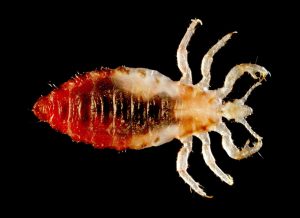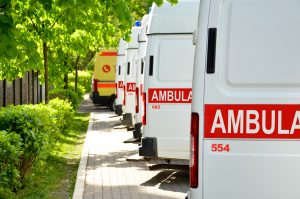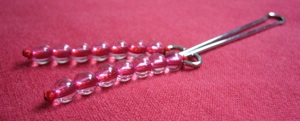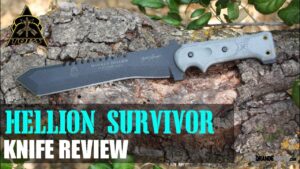Last time, we talked about the curse of the overcrowded day care, the head louse. This time, we’ll talk about less common, but more dangerous versions of one of our least favorite pests: body lice, pubic lice, and scabies. With the advent of homeless cities throughout the nation, these can be an issue in normal times as much as in disaster settings.
Body Lice
Body lice (Pediculus humanus humanus) appeared much more recently than head lice, probably around the time that humans started wearing clothes (about 160,000 years or so ago). As the concept of doing laundry occurred somewhat later than that, you can imagine that constant contact with dirty clothes caused frequent infestations. Situations where washing your clothes and/or your body regularly isn’t an option can cause problems with body lice, so you can see the significance for the medic in survival scenarios. Unlike head lice, body lice carry many diseases that can affect humans; diseases that can cause problems more serious than just an itchy rash.
There are three stages of body lice:
Nit: Nits are oval-shaped, yellow-white lice eggs. Body lice nits are tiny; you’re most likely to find nits in the seams of your clothing than on your body.
Nymph: A nymph is a juvenile louse. Nymphs are smaller than adult lice but will mature into adults after feeding on human blood for 9-12 days.
Adult: (image at top) An adult louse looks yellow-gray or brown-red. They’re a little larger than head lice, about the size of a sesame seed. The life span of a body louse is about 20 days.
Pediculosis corporis, also known as “vagabond’s disease,” is a skin condition caused by body lice that lay their eggs on clothing and to a lesser extent on human hairs. They manifest as intense itching and rashes; long-term infestations lead to skin areas that are thickened and darker than the surrounding skin tone. Body lice have also been linked to outbreaks of infectious diseases such as typhus, trench fever, and epidemic relapsing fever in places like homeless camps.
Pediculosis corporis is spread through prolonged direct physical contact with a person who has them or with that person’s clothing, towels, or bedding. The lice themselves are slightly larger than head lice and prefer to live on dirty clothes (especially the seams) rather than on the body itself. They go to the human body only to feed. Also, they are sturdier than their cousins and can live without human contact for 30 days or so. Examination of clothes and bedding seams usually identifies the problem.
Destruction of the infested clothing, if possible, is the appropriate strategy here. Sometimes, using medication is unnecessary as the lice have left with the clothes (don’t bet on it, however).
Treatment Of Body Lice Infestations
 Wash in hot water or throw out
Wash in hot water or throw out
Body lice are primarily treated by thoroughly washing yourself and any contaminated items with soap and hot water at 130 degrees Fahrenheit. Dry clothing and bedding in a machine dryer using the hot cycle. Ironing clothing that cannot be washed may also be effective. Of course, destruction of the infested clothing may be the most appropriate strategy. Sometimes, using medication is unnecessary as the lice have left with the clothes (don’t bet on it, however).
Items that can’t be washed, dried, or discarded should be sealed in a plastic bag and stored for two weeks. Mattresses, couches and other upholstered furniture items should be hot ironed or sprayed with lice-killing products to eliminate eggs from seams. Exposure to infested items should be avoided for two weeks.
Itching and skin irritation can be treated with 25 mg of diphenhydramine (Benadryl) or other antihistamine. Hydrocortisone cream may also help. Natural remedies include aloe vera gel, oatmeal pastes, and ice. Some suggest vinegar, but it may not be effective.
In most cases, stronger medicines (called “pediculicides”) aren’t needed, but If these measures don’t work, an over-the-counter lotion or shampoo, similar to that used for head lice. 1% permethrin (Brand name: NIX) or pyrethrin (Brand name: RID) are viable options. Other, stronger meds used to treat lice include:
- Lindane Shampoo (prescription brand Kwell). Too strong for kids and may have side effects on the nervous system.
- Spinosad (brand name Natroba, a natural insecticide derived from soil bacteria; only for lice in children 4 years or older
- Ivermectin 0.5% (brand name Sklice). Yes, that ivermectin. Also derived from soil bacteria; only for lice in children 6 months or older)
Nix lotion (permethrin) will kill both the lice and their eggs. Rid shampoo will kill the lice, but not their eggs; be certain to repeat the shampoo treatment 7 days later. This may not be a bad strategy with the other treatments as well. Thoroughly examine the area in question for persistent nits and adults.
Pubic Lice
Some lice specialize in the scalp, like head lice, but others inhabit the human groin. Commonly known as “crabs,” pubic lice (scientific name: Pthirus pubis) have many colorful nicknames (my favorite is “crotch crickets”). Although they famously are passed from the pubic area of one person to another via “close contact,” pubic lice can also be found in other hairy places, like the armpit.
Severe itching is the main symptom. Although they are sometimes seen on a patient that coincidentally has other sexually transmitted diseases, pubic lice do not actually transmit them. Having said that, all lice cause irritation that can have major implications for the health of family members. Irritation and itching caused by lice may break the skin, allowing other infections to develop.
Interestingly, pubic lice are a rarity among sexually transmitted diseases in that they are one of the few not prevented by the use of a condom.
Scabies
Scabies is often confused with “crabs”, but it’s caused by another creature entirely: tiny eight-legged mites of the species Sarcoptes scabiei. Like pubic lice, scabies can be passed through sexual contact or other direct skin-to-skin contact with another human, but not from animals.
Unlike lice, however, the mites do not live and reproduce on hair shafts but burrow through the skin forming small raised red bumps that may become “crusty”. These areas may hold hundreds of mite eggs. Itching is usually severe and most intense at night. It should be noted that Scabies can affect skin folds, even in areas with little hair, such as those of the wrists, elbows, or between fingers and toes.
Infestations with pubic lice and scabies mites can be treated with the same medicines in lotion or shampoo form as those used for body lice. They are repeated below:
- Pyrethrins (brand name Rid shampoo, a natural product also found in chrysanthemum flowers).
- Permethrin 1% (brand name Nix lotion, a synthetic pyrethrin)
- Lindane Shampoo (prescription brand Kwell); usually used only in severe cases and not in children.
- Spinosad (brand name Natroba, a natural insecticide derived from soil bacteria; only for lice in children 4 years or older.
- Ivermectin 0.5% (brand name Sklice, also from soil bacteria and only for head lice in children 6 months or older).
It should be noted that continued vigilance is needed despite having treated the condition. If living lice or mites are still noted, repeat in 7-10 days. If nits are seen, lice combs such as used for head lice are recommended.
Joe Alton MD
Hey, don’t forget to check out our entire line of quality medical kits and individual supplies at store.doomandbloom.net. Also, our Book Excellence Award-winning 700-page SURVIVAL MEDICINE HANDBOOK: THE ESSENTIAL GUIDE FOR WHEN HELP IS NOT ON THE WAY is now available in black and white on Amazon and in color and color spiral-bound versions at store.doomandbloom.net.










 Louse nit
Louse nit pubic louse or “crab”
pubic louse or “crab” Appearance of skin in scabies
Appearance of skin in scabies Dr. Alton
Dr. Alton











